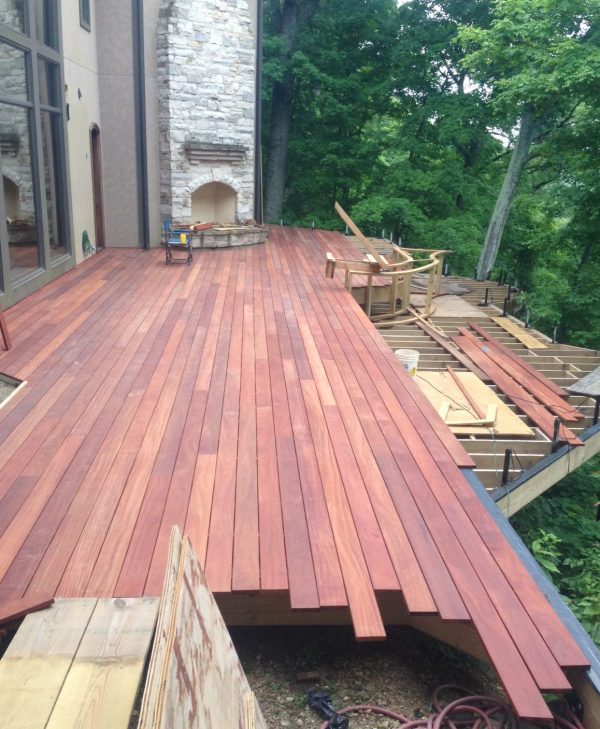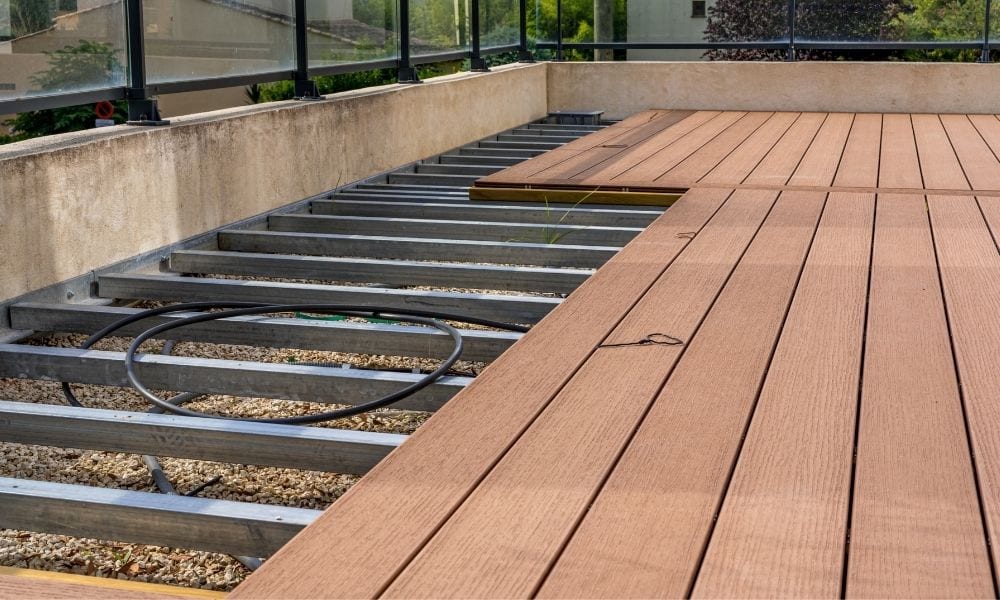Choosing the right materials is crucial when preparing for your deck installation project.
Choosing the right materials is crucial when preparing for your deck installation project.
Blog Article
Exactly how to Select the Right Materials for Your Deck Installation Job
Selecting the appropriate products for your deck installation job can seem daunting. The trick is to balance your budget plan, style choices, and way of life requires to produce a deck that will certainly improve your exterior area for years to come.
Comprehending the Various Sorts Of Deck Products
When beginning on a deck installment task, the selection of products becomes a pivotal decision. Composite products, on the other hand, are a mix of timber and plastic, giving sturdiness and resistance to weather elements. By understanding these distinctions, home owners can make an extra enlightened decision on the most ideal deck material for their particular demands.
Evaluating the Resilience and Upkeep Needs of Deck Materials
Examining the longevity and maintenance needs of deck materials is an essential action in deck installment. Resilience involves the material's capacity to hold up against rough weather conditions, deterioration, and its durability. For instance, cedar and redwood are normally resistant to rot and insects, making them long lasting choices. On the other hand, pressure-treated timber, while long lasting, might require more maintenance as a result of its susceptibility to cracking and deforming.
Comprehending upkeep demands is just as vital. Some products require routine sealing or discoloring to keep their look and withstand wetness damage, while others, like composite outdoor decking, demand less maintenance. By reviewing these aspects, one can select the most suitable outdoor decking product, guaranteeing an equilibrium between resilience, maintenance needs, and visual allure.
Price Analysis: Contrasting Timber and Compound Decking
Although expense may originally appear like a secondary concern, it is a significant variable when contrasting timber and composite decking. Wood, usually a less pricey alternative, has a reduced ahead of time price. Nonetheless, gradually, maintenance expenses can build up, possibly making timber much more expensive over time. These upkeep costs might consist of discoloration, sealing, or changing harmed boards. On the various other hand, composite outdoor decking, while costlier at first, calls for less maintenance, possibly lowering lasting expenses. It's vital to keep in mind that composite decking isn't invulnerable to wear and tear, and replacement expenses can be high. Therefore, prospective deck owners must consider their budget and desire to keep their decks when choosing between timber and composite outdoor decking.
Appearances and Style Adaptability of Decking Products
While price is an essential consideration, the aesthetic charm and style adaptability of outdoor decking products likewise play a significant role in the decision-making process. Different materials use varying levels of aesthetic appeal. Natural timber decking supplies a traditional, ageless look, while composite products use a vast array of colors and appearances to suit varied tastes and designs. In a similar way, style flexibility describes the ability to form and manipulate the decking product to meet particular style needs. Timber, as an example, supplies high style versatility because of its simplicity of cutting and shaping. Composite products, while much less versatile in style, are still adaptable sufficient for the majority of deck layouts. These elements, as a result, are essential components in the choice of decking product.
Environmental Influence of Decking Materials
When selecting outdoor decking products, one need to consider not only visual appeals and toughness, however likewise the ecological effect. It's vital to analyze the sustainability of products and check out recycled outdoor decking options. Understanding the prospective impact on local ecosystems will make certain a more environmentally liable selection.
Examining Product Sustainability
In the realm of deck construction, assessing material sustainability is an important step. This involves evaluating the environmental impact of each prospective product, thinking about aspects such as the power required for its manufacturing, its carbon footprint, and its end-of-life disposal or reusing choices. Timber is a renewable source, yet unsustainable logging methods can lead to logging. Composite outdoor decking materials often incorporate timber and plastic, reducing the demand for new lumber but enhancing reliance on fossil fuels. Light weight aluminum and various other steels may be more sturdy and recyclable, but their removal and handling can be energy-intensive. Hence, the option of decking products must stabilize performance, visual appeals, cost, and sustainability to guarantee a liable and durable installment.
Recycled Decking Alternatives

Compound decking is especially preferred due to its sturdiness like this and ease of maintenance. Recycled plastic outdoor decking, on the various other hand, is highly resistant and requires minimal upkeep.

Influence On Local Communities
While the benefits of using recycled products for decking can not be overemphasized, it's equally vital to take into consideration the wider environmental ramifications of these selections. Correct disposal of old decking is vital to decreasing garbage dump waste. Basically, an eco-conscious deck project needs cautious material choice, lasting sourcing, and accountable disposal.
Making Your Final Decision: Tips for Selecting the most effective Deck Materials
As the article transitions into the subtopic of "Making Your Final Choice: Tips for Picking the very best Deck Products", it is important to recognize the range of deck products available. Striking an equilibrium between durability and looks is necessary in this selection procedure. The following conversation will certainly direct readers in making an enlightened option based upon these essential factors to consider.
Understanding Different Deck Products
The task of selecting the ideal products for your deck setup can seem daunting because of the huge selection of options available. However, recognizing the various products can streamline this procedure. Wood is a see popular choice, providing a timeless visual and cost. Sorts of wood used include pressure-treated lumber, cedar, and redwood. Compound products, made from a mix of timber and plastic, are low-maintenance and immune to rot and bugs. Plastic or PVC Recommended Reading decks are a lot more resilient and require less upkeep than composite materials, yet they can look less natural. Light weight aluminum decks are solid, light-weight, and resistant to rot, but they are additionally the most costly alternative. Each product has its own advantages and downsides, making it vital to consider your specific demands prior to making a decision.
Longevity vs. Appearances Equilibrium
Stabilizing resilience with appearances can be a difficulty when choosing deck materials - deck installer austin. High-traffic locations might demand durable materials like composite decking, which endures wear and tear however might do not have the all-natural appeal of timber. Home owners require to strike a balance, considering both the deck's useful demands and their aesthetic choices.
Final thought
Finally, choosing the right products for your deck setup job needs cautious consideration of variables such as toughness, maintenance, price, looks, and environmental effect. Whether you choose for typical wood or composite products, your choice should line up with your spending plan, layout choices, and way of life. Ultimately, the best outdoor decking material is one that enhances your outdoor room and gives satisfaction for many years ahead.
Report this page